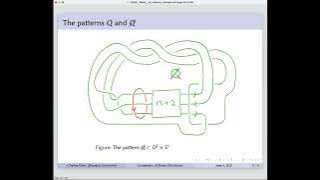Satellite knot
In the mathematical theory of knots, a satellite knot is a knot that contains an incompressible, non boundary-parallel torus in its complement. Every knot is either hyperbolic, a torus, or a satellite knot. The class of satellite knots include composite knots, cable knots, and Whitehead doubles. A satellite link is one that orbits a companion knot K in the sense that it lies inside a regular neighborhood of the companion. A satellite knot can be picturesquely described as follows: start by taking a nontrivial knot lying inside an unknotted solid torus . Here "nontrivial" means that the knot is not allowed to sit inside of a 3-ball in and is not allowed to be isotopic to the central core curve of the solid torus. Then tie up the solid torus into a nontrivial knot. This means there is a non-trivial embedding and . The central core curve of the solid torus is sent to a knot , which is called the "companion knot" and is thought of as the planet around which the "satellite knot" orbits. The construction ensures that is a non-boundary parallel incompressible torus in the complement of . Composite knots contain a certain kind of incompressible torus called a swallow-follow torus, which can be visualized as swallowing one summand and following another summand. Since is an unknotted solid torus, is a tubular neighbourhood of an unknot . The 2-component link together with the embedding is called the pattern associated to the satellite operation. A convention: people usually demand that the embedding is untwisted in the sense that must send the standard longitude of to the standard longitude of . Said another way, given any two disjoint curves , preserves their linking numbers i.e.: . (Wikipedia).

















